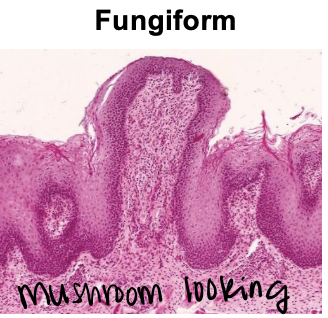Exam 4: lec 38 taste/smell
1/20
Earn XP
Description and Tags
Sensory cell = taste receptor = gustatory cell
Name | Mastery | Learn | Test | Matching | Spaced |
|---|
No study sessions yet.
21 Terms
taste is a chemoreceptor or neuron?
chemoreceptor!!
•Taste buds are most numerous on ________ papillae
vallate papillae
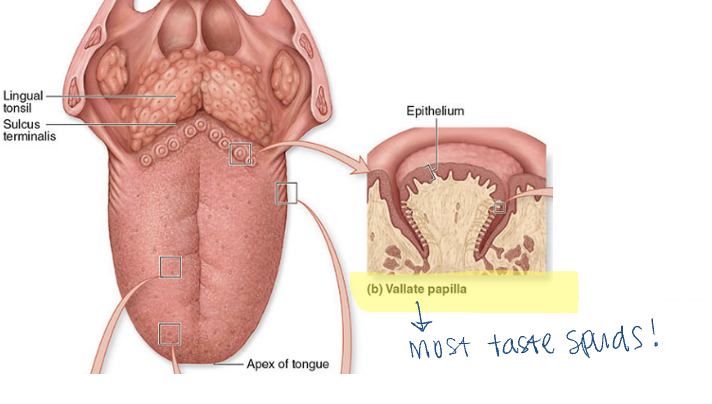
8-12 large vallate papillae
what type of cell in taste buds?
•Don’t respond to taste stimuli
•i.e., Sustentacular Cells
•Supporting Cells
—
note:
Supporting cell
=
Sustentacular cell
what type of cell in taste buds?
•Undifferentiated stem cells
•Undergo continuous turnover
•Every 10 days
•Basal Cells
what pallipae funcs to move food and does NOT have taste spuds?
(•Sense texture and provide friction)
*****
Filiform papillae —- “grippers”
•Pointed
•Papillae provide friction to help move food during chewing
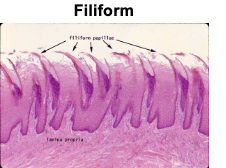
what papillae*****
•Scattered across the dorsal surface, has taste spuds
-loc. on dorsal surface
•Most numerous near the tip
•Chorda tympani
Fungiform papillae
what papillae?*****
•Ridge-like, loc. lateral borders of tongue
•Most developed in young children — kids like bland food
•Taste buds in folds on the sides
•CN IX and chorda tympani
Foliate papillae
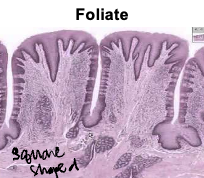
what papillae? *****
•8-12 at back 1/3 of the tongue
•Surrounded by a trench of taste buds
•CNs VII and IX
•Circumvallate papillae
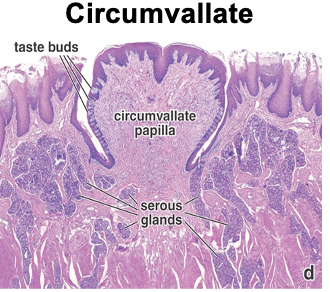
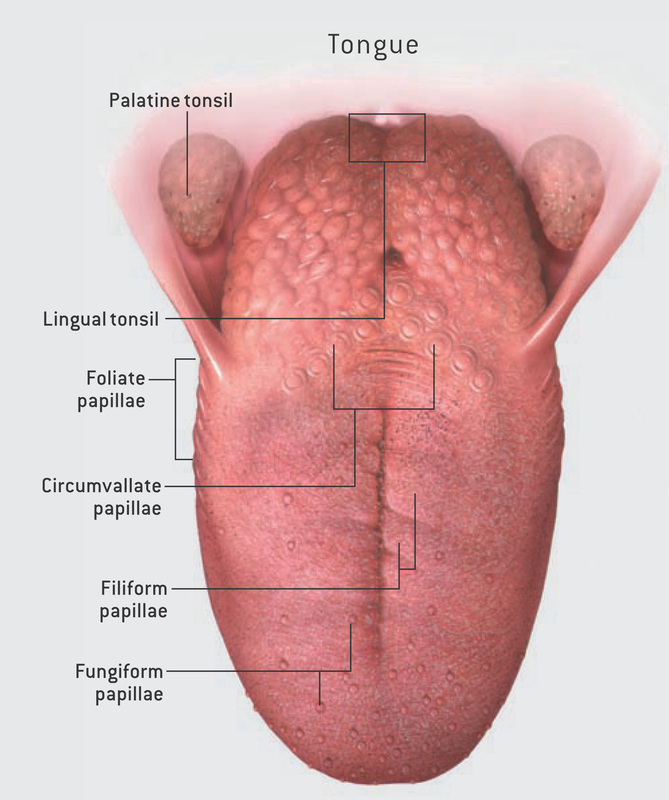
Gustatory:
bitter
sour
salty
sweet / unami
•Filiform: NONE
•Circumvallate: Bitter
•Foliate: Sour
-
•Fungiform:
•Anterior 2/3 (not tip): Salty
•Tip of tongue: Sweet and Umami
•Umami: aka glutamate or MSG
•‘Tastes like chicken!’
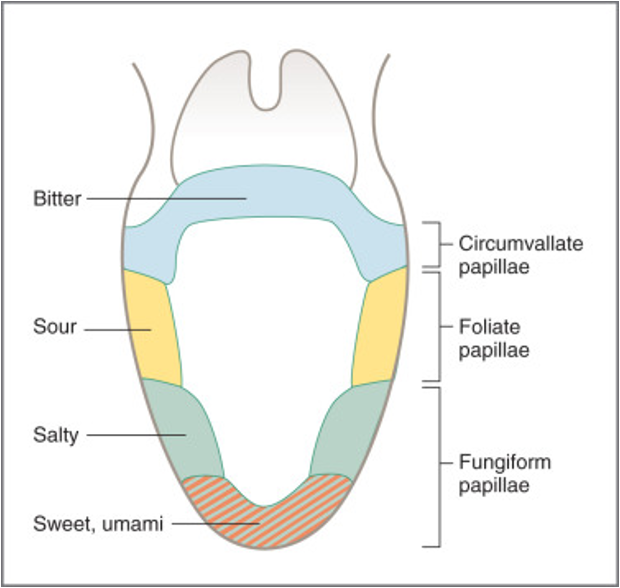
Taste transduction:
—> depolarization of the ____________
—> promoting __________
—> afferent first-order neurons
—> VPN of thalmus
—> depolarization of the taste receptor membrane
—> promoting action potential
—> afferent first-order neurons
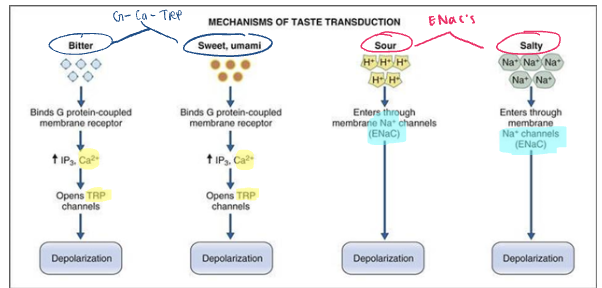
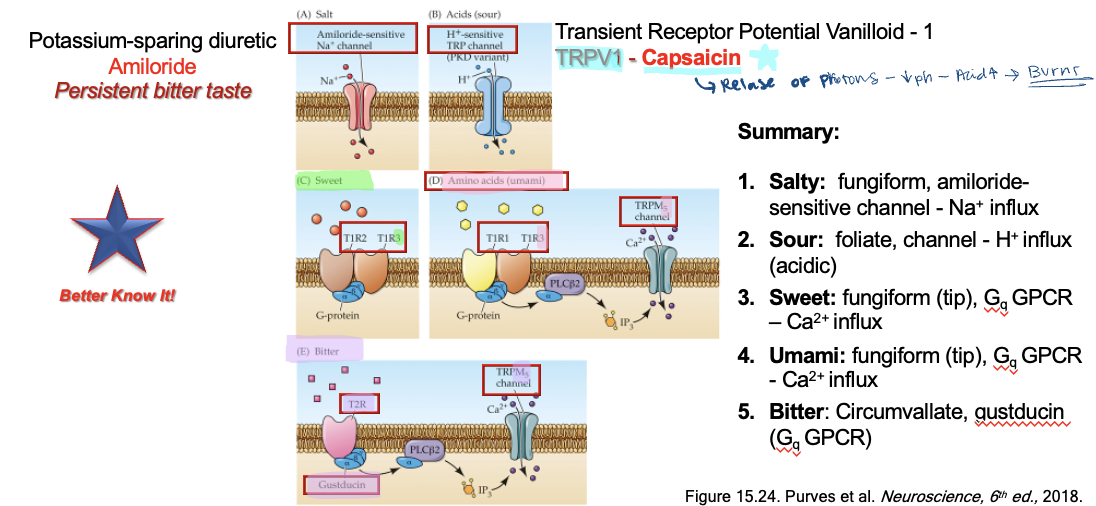
affect pathways of taste receptors
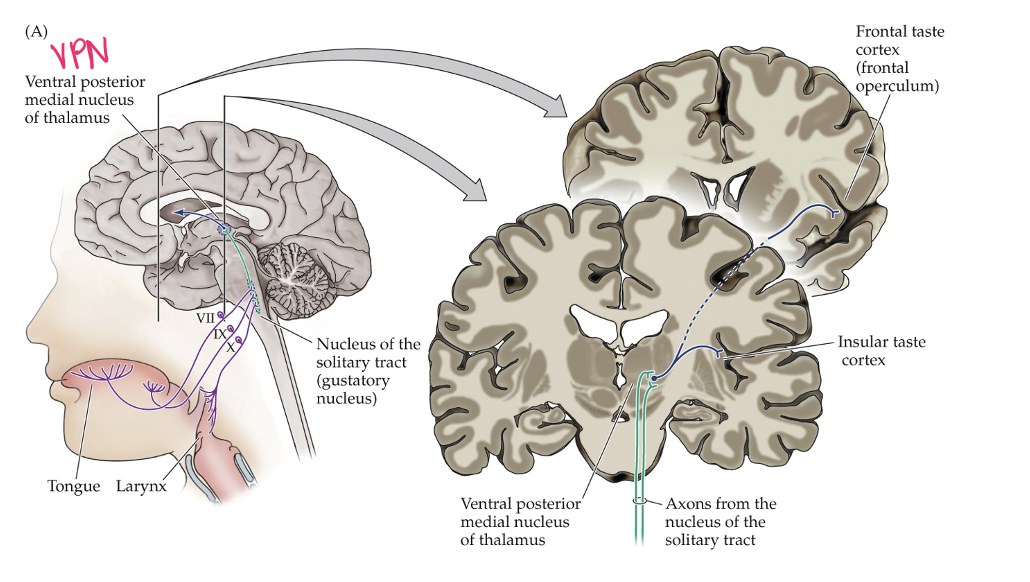

CM example:
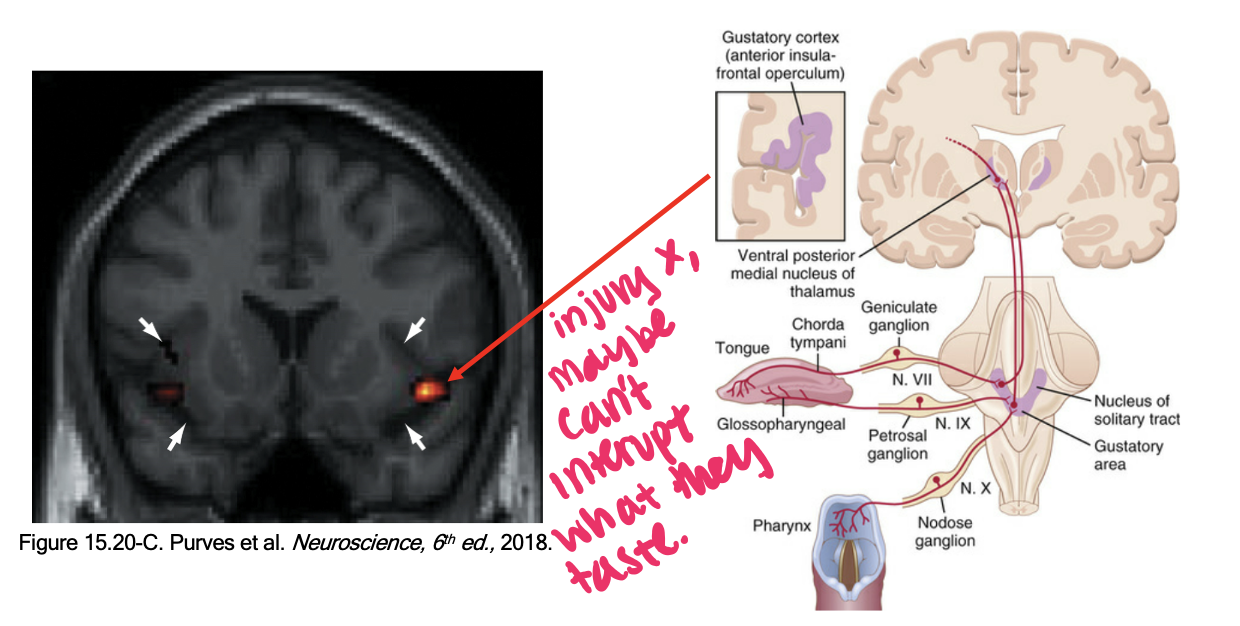
-can be seen on func. MRI
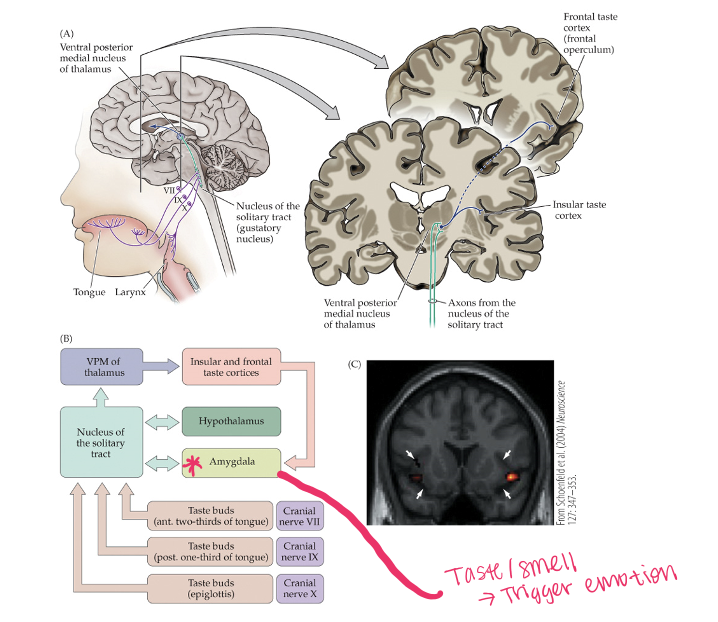
^^ BETTER KNOW IT ***
Olfactory system is made up of?
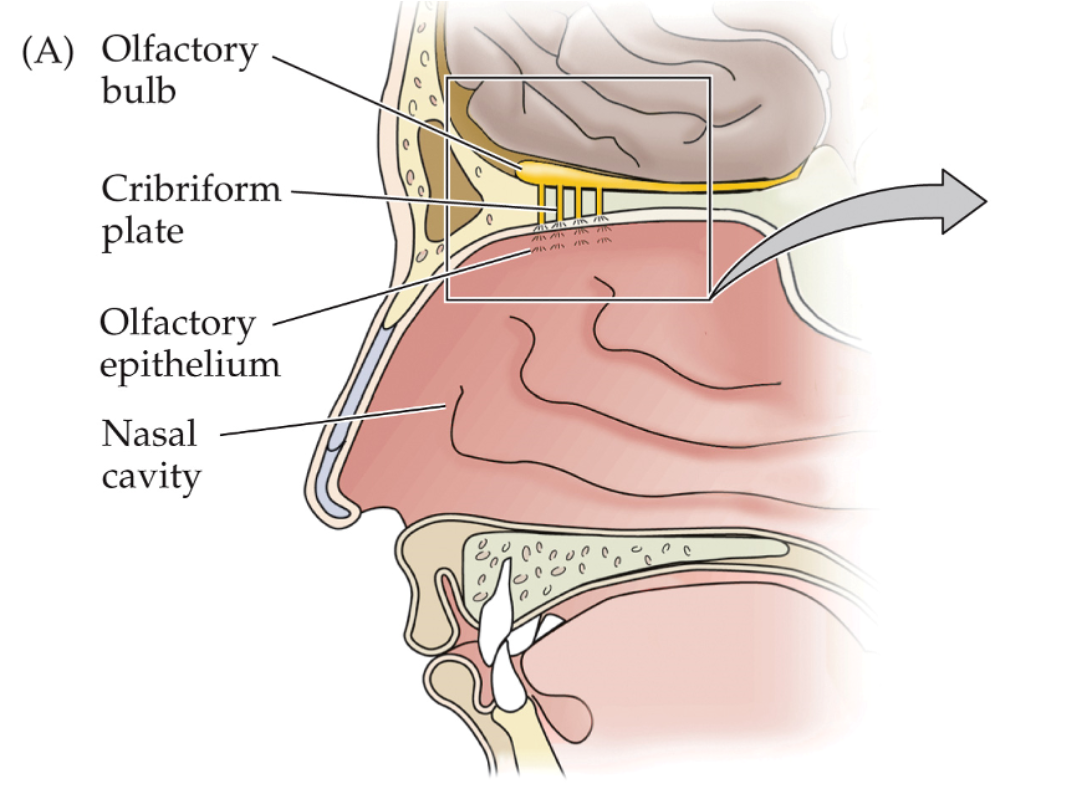
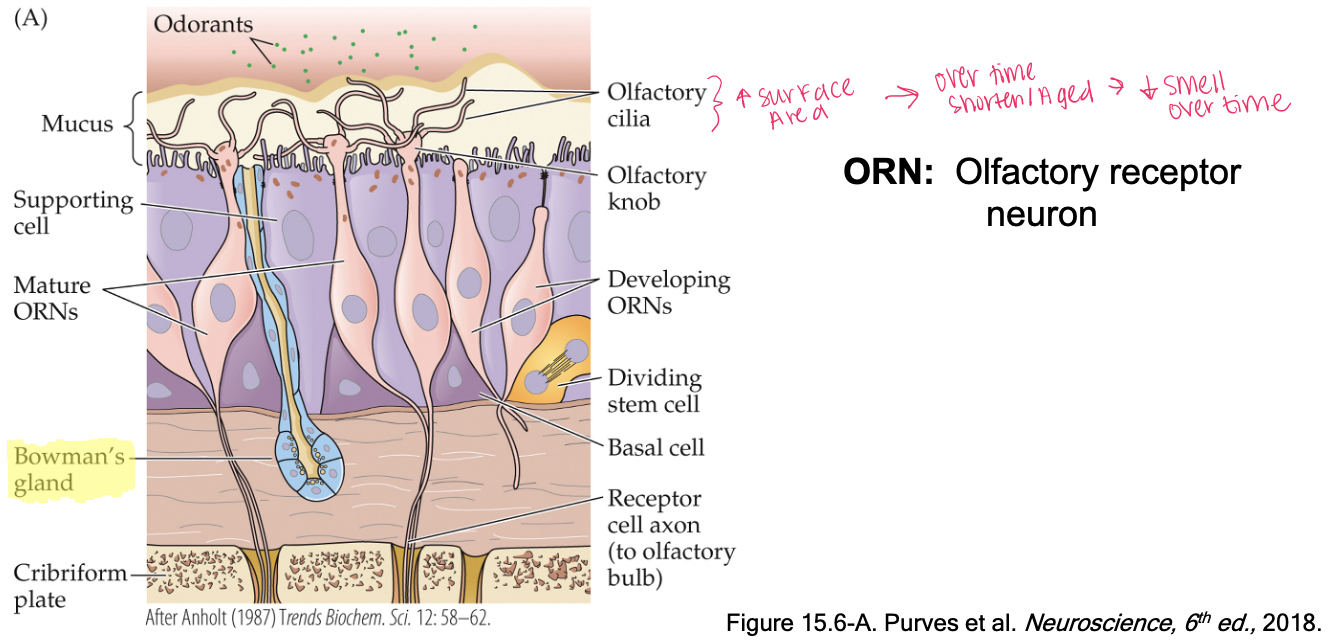
Diagram of the olfactory epithelium showing the major cell types: -
ORNs and their cilia,
Sustentacular (supporting) cells that detoxify potentially dangerous chemicals,
Bowman’s glands produce mucus.
Bundles of unmyelinated axons and blood vessels run in the basal part of the mucosa (the lamina propria).
ORNs are generated continuously from dividing stem cells maintained among the basal cells of the olfactory epithelium
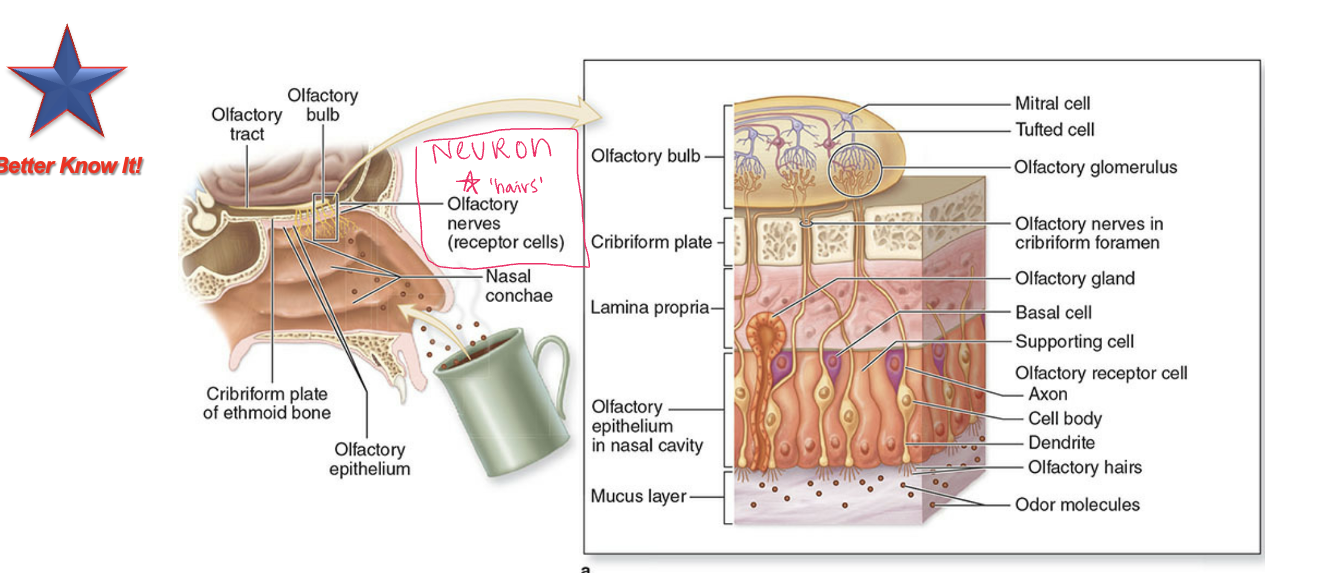
The olfactory mucosa covers the superior conchae bilaterally and sends axons from throughout its entire 10 cm2 area to the brain via small openings in the cribriform plate of the ethmoid bone.
It is a pseudostratified epithelium, containing basal stem cells and columnar support cells in addition to the bipolar olfactory neurons.
The dendrites of these neurons are at the luminal ends and have cilia specialized with many membrane receptors for odor molecules.
Binding such ligands causes depolarization which passes along basal axons to the olfactory bulb of the brain.
======================================
(b) Only a thin basement membrane separates the olfactory basal cells
(B) from the underlying lamina propria (LP). Nuclei of the bipolar olfactory neurons (ON) lie in the middle of the pseudostratified olfactory epithelium, with a zone of supporting cell (S) nuclei above it. At the apical end of the cells are the nonmotile cilia (C), or olfactory hairs, and a layer of mucus (M). (X200;
what type of cell? (olfactory)
•Bipolar neurons
•Primary afferent neurons
•Site of odorant binding, detection, and transduction Odorants bind to receptors on cilia à extend into the nasal mucosa
Olfactory receptor cells
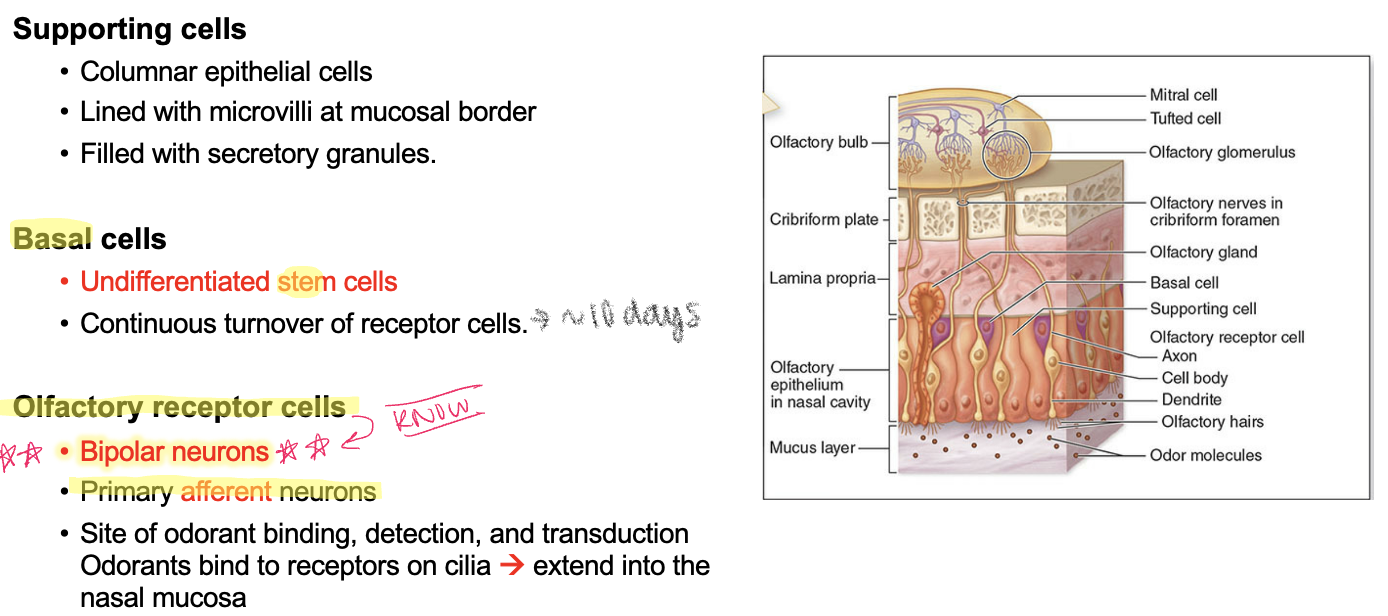
fracture of the ____________ can sever olfactory afferent pathway causing decrease of ability to smell
•Cribriform plate
olfactory afferent mechanism:
1.Odorants bind to ________
2.Increase in _________
3.Increase in __________
4.Opens _______ channels in cilia
5.Depolarization
6.Action potentials —> _______
1.Odorants bind to olfactory receptors
2.Increase in olfactory G-proteins
3.Increase in cAMP
4.Opens cation channels in cilia
5.Depolarization
6.Action potentials —> CN I
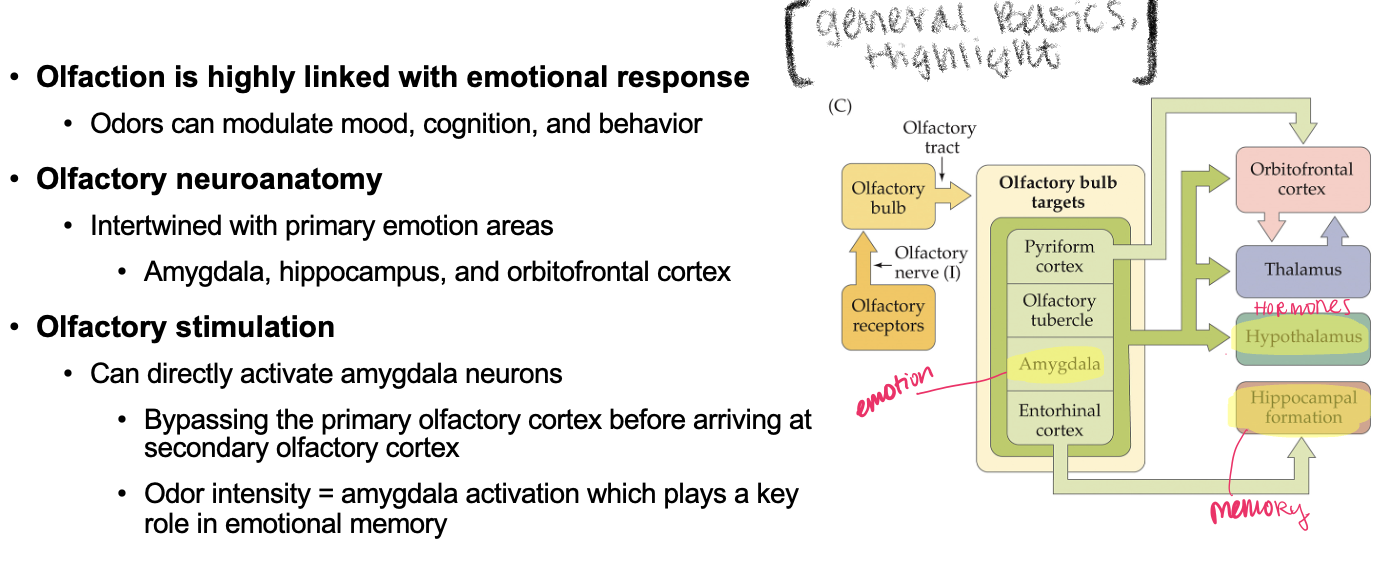
PTSD can be triggered by smell due to the amygdala
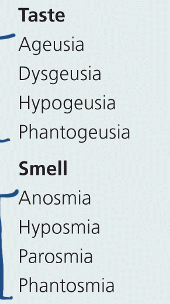
BETTER KNOW IT

Causes of Smell Disorders
•Aging
•Sinus and other URI
•Smoking
•Growths in nasal cavities
•Hormonal disturbances
•Exposure to certain chemicals
•Radiation treatment
•Parkinson’s or Alzheimer’s Disease
•Eating disorders
•Schizophrenia
EXAMPLE:
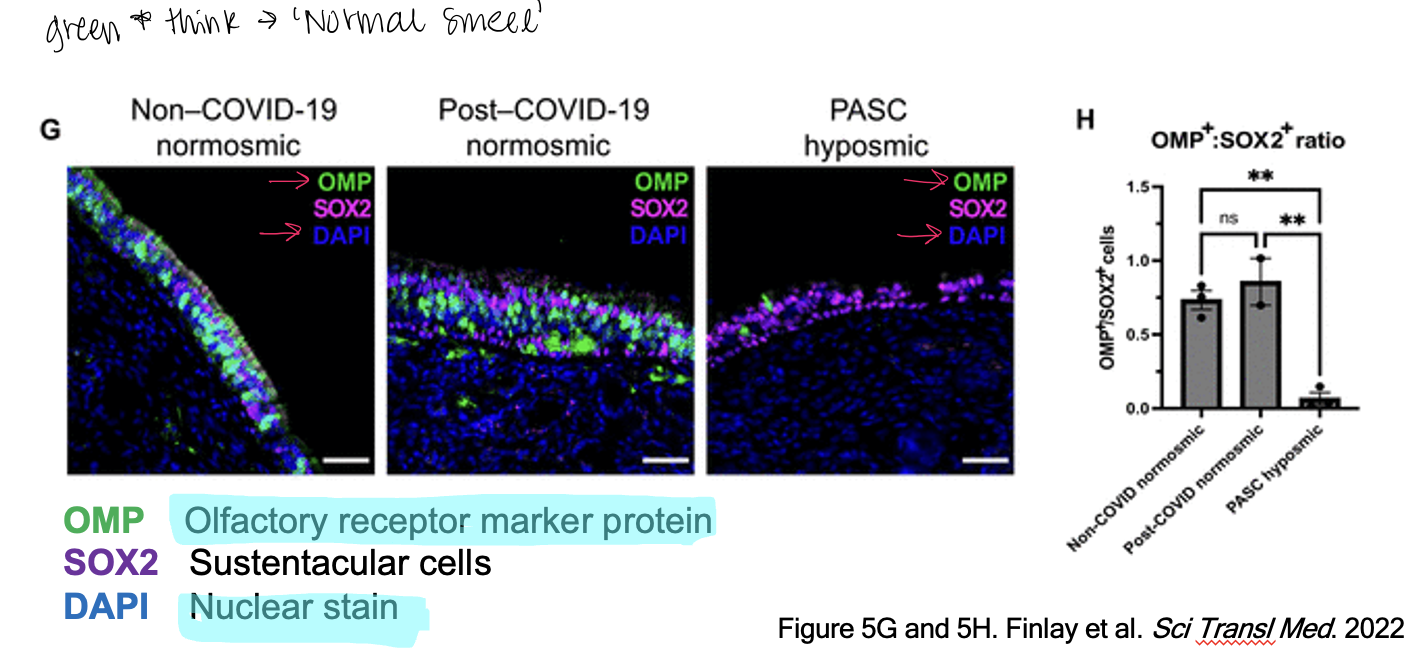
Causes of Taste Disorders
•URI and Middle ear infections
•Radiation therapy for cancers of the head and neck
•Exposure to certain chemicals/medications
•Head injury
•Some surgeries to the ear, nose, and throat or extraction of third molar
•Poor oral hygiene and dental problems
